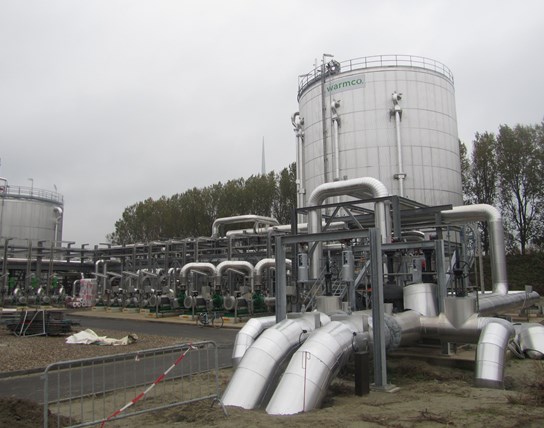Sustainability
Sustainable transport of goods
In order to develop North Sea Port further into a multimodal logistics platform, we are constantly working on the multimodal infrastructure and the accessibility of the port. For a number of years, we have been actively implementing the modal shift from road transport to railways, inland shipping and pipelines for the supply and removal of goods. We do this not only to facilitate and serve clients, but also to prevent congestion in the port area. Up to 90% of the hinterland traffic used to be carried out by trucks. As the road network in Europe is becoming increasingly saturated, only 1/3 of the hinterland traffic is currently still carried out by trucks. In the near future we want to reduce this share even more.
Hydrogen
North Sea Port and the industry face the major challenge of making the transition from fossil fuels to sustainable fuels and feedstock. Hydrogen plays a very important role in this. As the largest hydrogen hub in the Benelux, the port is growing into a European partner.
Efficient spatial planning
We utilise the space available in the port area in a well-considered and sustainable manner: with correct integration of activities in the port area, taking into account both the wishes of companies and contextual business site factors. We provide a maximum symbiosis between companies by clustering them in the best way possible. This allows them to complement and strengthen one another, e.g. by exchanging waste flows.
Living environment and nature
Respect for living environment and nature
The port is growing and at the same time respects the healthy living environment in the surrounding villages and the buffer areas in the immediate vicinity. By collaborating with companies, the competent authorities and environmental associations and organisations, our aim is to achieve jointly defined sustainability objectives. We encourage companies to apply “clean technologies” in their business processes and to try and exchange waste flows with other port users.
As a logistics and industrial port, North Sea Port itself is also a source of CO2 emissions. These emissions are related to production (which is characteristic of some of the activities in the port). We are committed to reducing CO2 emissions by encouraging companies to avoid, reduce or utilise CO2 emissions, and by promoting transport via inland shipping, by rail and pipelines instead of road transport.
We want to make the port activities less dependent on fossil fuels and aim to have a minimum of 30% renewable energy in our energy production mix by 2022.
Together. Smarter: collaboration with stakeholders
North Sea Port, companies, authorities and organisations are actively collaborating to turn North Sea Port into an increasingly sustainable port.
Environmental management
North Sea Port strives for a continuous improvement of its sustainable operational management. For this purpose, as a merged company, we aimed at using one single environmental management system. With this system we are monitoring the environmental aspects of our own processes in order to make them more sustainable still by making use of its outcome.
North Sea Port is using the Port Environmental Review System to achieve this.
How we do it
-
North sea Port is becoming a true Energy Port by reducing and reusing its own CO2 emissions and encouraging other companies in the port to do the same. Together with our stakeholders, we're working towards a sustainable future.

Renewable Energy
-
North Sea Port views residual streams, CO2 and waste as valuable raw materials that play a key role in the circular economy. By making use of innovative solutions, materials that would otherwise be dumped or lost are used for new purposes.

Circular economy
-
North Sea Port is a multimodal port. We’re right in the middle of all European waterways, railways and highways. This enables us to replace road transportation by more sustainable ways of transporting goods.

Mobility and multimodality
-
North Sea Port has developed the Enigma+ port information system and uses the Lock Planning Tool. We also make our port dues greener: clean vessels receive a discount. By collecting data and developing smart applications, we can save quite a lot on energy and emissions, and encourage ships to implement measures to improve sustainability.

Data
-
North Sea Port supports sustainable research, projects and initiatives. We join forces with industrial partners the cities and municipalities, the government and universities - in short: with all our stakeholders.

Collaboration with stakeholders
Sustainable Development Goals
Our sustainability strategy aligns with the Sustainable Development Goals, developed and signed by the United Nations. These SDGs are developed along five pillars: People, Planet, Wealth, Peace and Partnership and call for a better future and cooperation between nations, companies and individuals.
